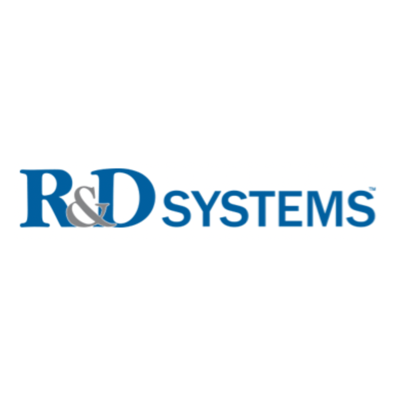 全部商品分类
全部商品分类

 下载产品说明书
下载产品说明书 下载SDS
下载SDS 用小程序,查商品更便捷
用小程序,查商品更便捷


 收藏
收藏
 对比
对比 咨询
咨询Carrier Free
CF stands for Carrier Free (CF). We typically add Bovine Serum Albumin (BSA) as a carrier protein to our recombinant proteins. Adding a carrier protein enhances protein stability, increases shelf-life, and allows the recombinant protein to be stored at a more dilute concentration. The carrier free version does not contain BSA.
In general, we advise purchasing the recombinant protein with BSA for use in cell or tissue culture, or as an ELISA standard. In contrast, the carrier free protein is recommended for applications, in which the presence of BSA could interfere.
9465-CL
| Formulation | Lyophilized from a 0.2 μm filtered solution in PBS, EDTA and DTT. |
| Reconstitution | Reconstitute at 1 mg/mL in PBS. |
| Shipping | The product is shipped at ambient temperature. Upon receipt, store it immediately at the temperature recommended below. |
| Stability & Storage: | Use a manual defrost freezer and avoid repeated freeze-thaw cycles.
|
Recombinant Human FABP1/L-FABP Protein, CF Summary
Product Specifications
Ser2-Ile127, with a C-terminal 6-His tag
Analysis

Background: FABP1/L-FABP
Fatty acid binding protein-1 (FABP1; also named L- or liver FABP, hepatic FABP, Z protein, and heme-binding protein) is a member of a large superfamily of lipid binding proteins that are expressed in a tissue specific manner (1, 10, 11). FABP1 is one of ten cytoplasmic FABPs that are 14-15 kDa in size and range from 126‑140 amino acids (aa) in length (1, 2, 3). Although all are highly conserved in their tertiary structure, there is only modest aa identity between any two members. The FABP family members are subdivided based on organ or tissue type it was originally expressed or identified; liver- (L-FABP), intestine- (I-FABP), heart- (H-FABP), adipocyte- (A-FABP), epidermal- (E-FABP), ileal- (IL-FABP), brain- (B-FABP), myelin- (M-FABP) and testis-FABP (T-FABP) (1). Human L-FABP, the product of the FABP1 gene, is a 127 aa cytosolic protein that shows a flattened beta -barrel structure generated by a series of antiparallel beta -strands and two alpha ‑helices (4, 7). Unlike other members in the FABP family, each molecule of FABP1 is capable of binding two molecules of long-chain fatty acids. Other ligands may include heme, steroids, acyl CoAs, oxidized/peroxidized fatty acids, leukotrienes, prostaglandins and peroxisome proliferators (5, 6, 7, 13). It is suggested that ligands first bind to the outside of the molecule, and this binding subsequently induces a conformational change in the binding protein, resulting in "internalization" of the ligand (7, 12). An Ala-to-Thr polymorphism at position # 54 has been associated with an increased risk of type II diabetes (7, 10) and a Thr-to-Ala polymorphism at position # 94 has been reported to increase cholesterol binding affinity (8). Human FABP1 is 84%, 82% and 90% aa identical to mouse, rat and canine FABP1, respectively (9). It also shows 29% and 24% aa identity to human H-FABP and I‑FABP, respectively.
- Smathers, R & Petersen, D. (2011) Human Genomics 5:170.
- Storch, J. & Thumser, AE. (2000) Biochim Biophys Acta. 1486:28.
- Mihajlovic,M. & Lazaridis, T. (2007) Protein Sci. 9:2042.
- Sweetser, D.A. et al. (1987) J. Biol. Chem. 262:16060.
- Wang, G. et al. (2015) J Lipid Res. 56:2238.
- Thompson, J. et al. (1997) J. Biol. Chem. 272:7140.
- Bernlohr, DA. et al. (1997) Ann. Rev. of Nut. 17:277.
- Huang, H. et al. (2015) Biochim Biophys Acta. 1851:946
- Lowe J.B. et al. (1985) J. Biol. Chem. 260:3413.
- Zimmerman, A.W. and J.H. Veerkamp (2002) Cell. Mol. Life Sci. 59:1096.
- Haunerland, N.H. and F. Spener (2004) Prog. Lipid Res. 43:328.
- Majava,V. et al. (2010) PLoS One. 5:e10300.
- Veerkamp JH, Maatman RGHJ. (1995) Prog. Lipid Res. 34:17.


参考图片
R&D Systems proteins are almost always sold with a bioassay to indicate activity. However, we recognize that sometimes proteins might be novel, and their bioactivity may not be well understood. In addition, some researchers may wish to use polypeptides to make antibodies. To facilitate the advancement of new science, we now offer our Innovator Series of proteins.




